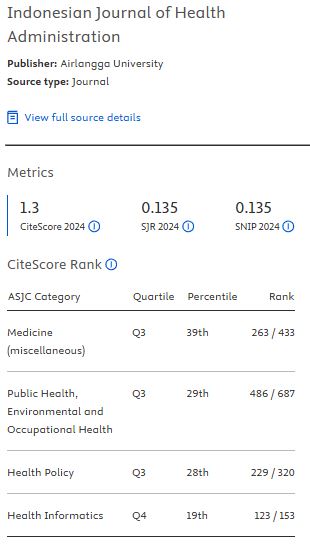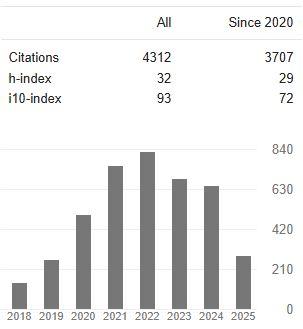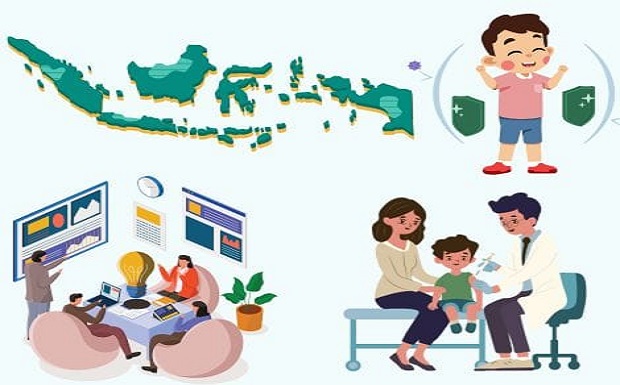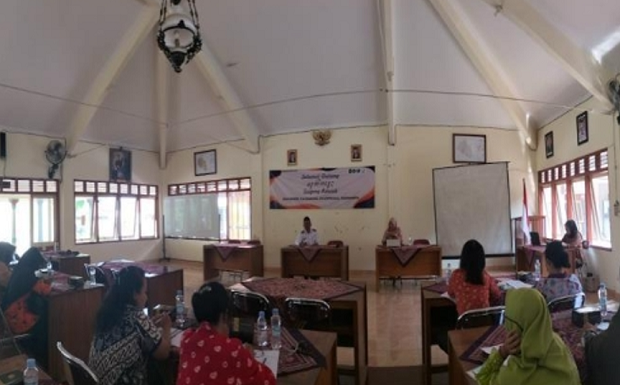Hubungan Faktor Individu dan Organisasi terhadap Kepatuhan Bidan Menerapkan Standar Prosedur Operasional Cuci Tangan
Downloads
Background: Infection cases are the major cause of the high rate of morbidity and mortality in the world. Nosocomial infections cause 1.4 million deaths every day in the world. Even the number of nosocomial infections in Indonesia also increases. Therefore, prevention is very necessary to be done. One effective prevention is hand-washing. However, health staffs including midwives still had under 50% compliance to apply Standard Operating Procedure of hand-washing.
Aims: The aim of this research was to analyze the influence of individual factors (motivation, knowledge, and attitude) and organizational factors (training, availability of facilities, supervision) on midwives' compliance in applying Standard Operating Procedure of hand-washing.
Method: The research was conducted at RSU Bakti Mulia, Banyuwangi. This was an observational research with an analytical and cross-sectional design. The population of the research was 40 midwives in the midwifery unit. The sample size was thirty-three midwives in the midwifery unit determined by Lemeshow formula withm simple random sampling. Data were collected by observation and questionnaire.
Results: The results showed that all variables had p values (0,001) < α (0.05). Individual and organizational factors have a significant and positive effect on midwives' compliance in the Standard Operating Procedure of hand-washing.
Conclusion: It can be concluded that the higher individual factors (motivation, knowledge, attitude) and the better organizational factors (training, availability of facilities, supervision) are, the higher midwives' compliance in Standard Operating Procedure of hand washing is. However, these factors were still low at RSU Bakti Mulia.
Keywords: compliance, hand-washing, individual factor, organizational factor, Standard Operating Procedure
Abdullah (2014) Kebutuhan Dasar Manusia untuk Mahasiswa Keperawatan. Jakarta: Trans Info Media (TIM).
Akbar, N. (2014) ‘Analisis Faktor-Faktor yang Mempengaruhi Tingkat Kepatuhan Perawat Terhadap Penggunaan Sarung Tangan di UGD Rumah Sakit Universitas Tanjungpura Kota Pontianak', Jurnal Proners, 3(1), pp. 1–11. Available at: http://jurnal.untan.ac.id/index.php/jmkeperawatanFK/article/view/21499/17405.
Al-Tawfiq, J. A. and Tambyah, P. A. (2014) ‘Healthcare associated infections (HAI) perspectives', Journal of Infection and Public Health. King Saud Bin Abdulaziz University for Health Sciences, 7, pp. 339–344. doi: 10.1016/j.jiph.2014.04.003.
Amalia, R., Widagdo, L. and BM, S. (2016) ‘Faktor-Faktor Yang Berhubungan Dengan Tingkat Kepatuhan Tenaga Kesehatan Melakukan Cuci Tangan (Studi Kasus Di Instalasi Rawat Inap Rajawali Rsup Dr . Kariadi Semarang)', Jurnal Kesehatan Masyarakat, 4(3), pp. 1083–1088. Available at: http://ejournal-s1.undip.ac.id/index.php/jkm.
Care, A. (2015) ‘Hubungan Kerjasama, Motivasi, Sikap, Dan Kinerja Bidan Dalam Pelayanan Antenatal', Jurnal Administrasi Kesehatan Indonesia, 3(1), pp. 11–20. Available at: https://e-journal.unair.ac.id/JAKI/article/view/1484/1145.
Ernawati, E., Rachmi, A. T. and Wiyanto, S. (2014) ‘Penerapan Hand Hygiene Perawat di Ruang Rawat Inap Rumah Sakit', Jurnal Kedokteran Brawijaya, 28(1), pp. 89–94. doi: 10.21776/ub.jkb.2014.028.01.30.
Fauzia, N., Ansyori, A. and Hariyanto, T. (2014) ‘Kepatuhan Standar Prosedur Operasional Hand Hygiene pada Perawat di Ruang Rawat Inap Rumah Sakit', Jurnal Kedokteran Brawijaya, 28(1), pp. 95–98. Available at: http://jkb.ub.ac.id/index.php/jkb/article/view/526.
Gibson (2009) Teori Perkembangan Kognitif. Jakarta: EGC.
Kaloa, T. Y., Kumaat, L. T. and Mulyadi (2017) ‘Hubungan Karakteristik Perawat dengan Kepatuhan Terhadap Standar Operasional Prosedur Pemasangan Infus di Instalasi Gawat Darurat RSUP Prof. DR. R. D. Kandou Manado', e-Journal Keperawatan, 5(1), pp. 1–6. Available at: https://ejournal.unsrat.ac.id/index.php/jkp/article/view/14818/14388.
Maringan, K., Pongtuluran, Y. and Maria, S. (2016) ‘Pengaruh Tingkat Pendidikan, Skap Kerja dan Keterampilan Kerja terhadap Prestasi Kerja Karyawan PT. Wahana Sumber Lestari Samarinda', Akuntabel Jurnal Ekonomi danKeuangan, 13(2), pp. 135–150. Available at: http://journal.feb.unmul.ac.id/index.php/AKUNTABEL/article/view/1180/106.
Natasia, N., Loekqijana, A. and Kurniawati, J. (2014) ‘Faktor yang Mempengaruhi Kepatuhan Pelaksanaan SOP Asuhan Keperawatan di ICU-ICCU RSUD Gambiran Kota Kediri', Jurnal Kedokteran Brawijaya, 28(1), pp. 21–24. Available at: http://jkb.ub.ac.id/index.php/jkb/article/view/513/393.
Notoatmodjo, S. (2010) Ilmu Perilaku Kesehatan. Jakarta: Rineka Cipta.
Rabbani S, me. et al. (2014) ‘Hubungan Pengetahuan Terhadap Perilaku Cuci Tangan Petugas Kesehatan Anak BLU RSUP DR RD Kandau Manado', Jurnal E-Clinic, 2(1). Available at: https://ejournal.unsrat.ac.id/index.php/eclinic/article/view/3661/3187.
Rikayanti, K. H. and 1, S. K. A. (2014) ‘Hubungan Tingkat Pengetahuan Dengan Perilaku Mencuci Tangan Petugas Kesehatan Di Rumah Sakit Umum Daerah Badung Tahun 2013', Community Health, 2(1), pp. 21–31. Available at: http://ojs.unud.ac.id/index.php/jch/article/view/7693.
Rohde, R. et al. (2016) ‘Healthcare-Associated Infections (HAI): Teh Perfect Storm TEMPhas Arrived! An Invited FOCUS Series (R. Rohde)', Clinical Laboratory Science, 29(1), pp. 28–31. Available at: https://digitalcommons.georgiasouthern.edu/health-policy-facpubs/131/.
Sahanggamu, P. M. and Mandey, S. L. (2014) ‘Pengaruh Pelatihan Kerja, Motivasi, dan Disiplin Kerja Terhadap Kinerja Karyawan Pada PT Bank Perkreditan Rakyat Dana Raya', Jurnal E, 2(4), pp. 514–523. doi: 10.1111/gcb.12061.
Sudarmo, S., Helmi, Z. N. and Marlinae, L. (2016) ‘No Title', Jurnal Berkala Kesehatan, 1(2), pp. 88–95. Available at: http://ppjp.unlam.ac.id/journals/index.php/berkala-kesehatan/article/view/3155.
Sudaryono (2018) Metodelogi Penelitian. Jakarta: Rajawali Pers.
Suprapto (2015) ‘Hubungan antara Tingkat Pengetahuan Perawat Tentang Pemasangan Infus dengan Kepatuhan Pelaksanaan Protap Pemasangan Infus di Instalasi Gawat Darurat RS TK II Pelamonia Makassar', JIK SH, 2(1), pp. 759–769.
Susilo, D. B. (2015) ‘Kepatuhan Pelaksanaan Kegiatan Hand Hygiene Pada Tenaga Kesehatan Di Rumah Sakit X Surabaya', Jurnal Wiyata, 2(2), pp. 200–204.
Widoyono (2009) Penyakit tropis: epidemiologi, penularan, pencegahan & pemberantasannya. Jakarta: Erlangga.
Wulandari, R. and Sholikah, S. (2017) ‘Pengetahuan Dan Penerapan Five Moments Cuci Tangan Perawat Di RSUD Sukoharjo', Gaster, 15(1), pp. 18–27. Available at: http://www.jurnal.stikes-aisyiyah.ac.id/index.php/gaster/article/view/133/125.
1. As an author you (or your employer or institution) may do the following:
- make copies (print or electronic) of the article for your own personal use, including for your own classroom teaching use;
- make copies and distribute such copies (including through e-mail) of the article to research colleagues, for the personal use by such colleagues (but not commercially or systematically, e.g. via an e-mail list or list server);
- present the article at a meeting or conference and to distribute copies of the article to the delegates attending such meeting;
- for your employer, if the article is a ‘work for hire', made within the scope of your employment, your employer may use all or part of the information in the article for other intra-company use (e.g. training);
- retain patent and trademark rights and rights to any process, procedure, or article of manufacture described in the article;
- include the article in full or in part in a thesis or dissertation (provided that this is not to be published commercially);
- use the article or any part thereof in a printed compilation of your works, such as collected writings or lecture notes (subsequent to publication of the article in the journal); and prepare other derivative works, to extend the article into book-length form, or to otherwise re-use portions or excerpts in other works, with full acknowledgement of its original publication in the journal;
- may reproduce or authorize others to reproduce the article, material extracted from the article, or derivative works for the author's personal use or for company use, provided that the source and the copyright notice are indicated.
All copies, print or electronic, or other use of the paper or article must include the appropriate bibliographic citation for the article's publication in the journal.
2. Requests from third parties
Although authors are permitted to re-use all or portions of the article in other works, this does not include granting third-party requests for reprinting, republishing, or other types of re-use.
3. Author Online Use
- Personal Servers. Authors and/or their employers shall have the right to post the accepted version of articles pre-print version of the article, or revised personal version of the final text of the article (to reflect changes made in the peer review and editing process) on their own personal servers or the servers of their institutions or employers without permission from JAKI;
- Classroom or Internal Training Use. An author is expressly permitted to post any portion of the accepted version of his/her own articles on the author's personal web site or the servers of the author's institution or company in connection with the author's teaching, training, or work responsibilities, provided that the appropriate copyright, credit, and reuse notices appear prominently with the posted material. Examples of permitted uses are lecture materials, course packs, e-reserves, conference presentations, or in-house training courses;
























